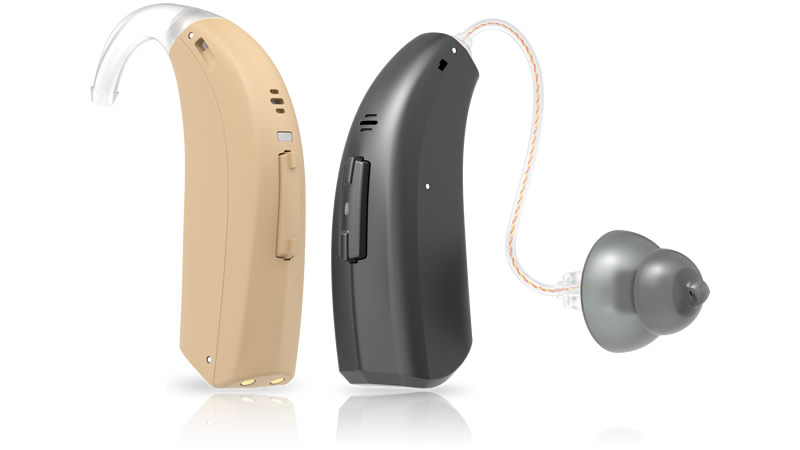- Home
- Hearing Loss
- Hearing Aid Use And Care
In addition to performance, how do parents choose children's hearing aids?
2025-05-28Choosing the right hearing aid for your child is a key step in the rehabilitation process of hearing-impaired children. In addition to paying attention to the performance indicators of hearing aids, such as sound amplification, noise reduction, battery life, etc., parents also need to consider many other factors to ensure that their children can use hearing aids comfortably and safely, so as to better integrate into the social and learning environment.

1. Comfort of wearing hearing aids
Children are in a critical stage of growth and development, and the shape and size of their ear canals will continue to change with age. Although customized hearing aids are highly concealed, the shape of the ear canal changes rapidly during the development of children, resulting in the need for frequent return of the hearing aid body shell to the factory for redoing, which not only increases the long-term cost burden, but may also affect the child's acceptance of hearing aids due to frequent replacement of the shell. In addition, customized hearing aids are smaller in size, and for children, there may be problems with poor fit and difficulty in wearing.
Therefore, it is recommended for children to choose behind-the-ear hearing aids and match them with suitable soft ear molds or hard ear molds. This combination can effectively reduce friction and irritation to the ear canal skin and improve wearing comfort. At the same time, parents need to regularly check the fit of the ear mold or earplug, and replace the ear mold or earplug of the appropriate size in time as the child grows, to ensure that the hearing aid always fits the ear canal and plays the best effect. In addition, the appearance color of the hearing aid should not be ignored. Choosing the color that the child likes, or the color tone that is similar to the child's skin color, can not only attract the child's attention, but also to a certain extent improve their acceptance and self-confidence of wearing hearing aids, making them more willing to actively use hearing aids.

2. Safety of hearing aid use
Being active and lively is the nature of children. Although this characteristic is cute, it also brings special challenges to the safe use of hearing aids. Children are full of curiosity about the world around them, which makes them face more safety risks when wearing hearing aids. These risks may not only affect the children themselves, but also other children. The shell design of most hearing aids is sturdy and durable, and can withstand a certain degree of collision and extrusion, thereby effectively preventing safety hazards caused by accidental damage. However, for younger children, it is recommended to choose hearing aids that can be set with a safety lock to prevent children from disassembling the battery compartment or removing the battery by themselves, and avoid accidents such as accidental swallowing or accidental injury.
3. Durability of hearing aids
Children are inevitably exposed to water and dust in their daily lives, so the waterproof and dustproof performance of hearing aids is crucial. Choosing hearing aids with a high waterproof and dustproof rating can effectively reduce equipment failures caused by accidental water ingress or dust accumulation, thereby extending the service life of hearing aids. In addition, children have rich daily activities and sweat a lot, and a large amount of sweat accumulated over a long period of time may cause erosion to hearing aids. Therefore, parents should do a good job of daily cleaning of hearing aids and regularly go to professional stores for deep cleaning and maintenance to ensure that hearing aids are always in good working condition and extend their service life.
4. After-sales support for hearing aids
When choosing hearing aids, parents should not only consider the product itself, but also pay attention to the after-sales service provided by manufacturers and dealers. Good after-sales service can ensure that children can get timely solutions when they encounter problems during use. For example, regular hearing assessment and hearing aid debugging are essential, which helps to adjust hearing aid parameters in time according to the changes in children's hearing to ensure the best hearing effect. In addition, the warranty policy, repair service, and accessories supply provided by the manufacturer are also factors that parents need to consider. Choosing a reputable and well-serviced hearing aid supplier can provide more comprehensive and lasting support for children.
In addition, hearing rehabilitation intervention is also a key link that cannot be ignored in the process of choosing hearing aids. Parents should not only choose hearing aids with excellent performance, but also pay attention to the later rehabilitation intervention work. According to the professional rehabilitation plan, provide children with continuous and systematic hearing rehabilitation training, such as sound perception training, speech differentiation exercises, and sentence imitation training. This can not only help children adapt to hearing aids faster, but also significantly improve their language expression and social interaction abilities. With regular hearing assessments and rehabilitation training, children will be able to gradually improve their hearing conditions, so that they can integrate more smoothly into social life and learning environments.
5. Psychological support
For children, wearing hearing aids is not only a physiological adaptation process, but also an important psychological adjustment stage. In this process, the understanding and support of parents are crucial. Parents should give their children enough patience and encouragement to help them build confidence and overcome the inferiority or anxiety that may arise from hearing problems. At the same time, the support of the school is also indispensable. Parents can actively communicate with their children's teachers and classmates to let them know about their children's hearing conditions, thereby creating an inclusive and understanding learning and living environment for their children. In addition, encouraging children to participate in mutual aid groups or social activities for hearing-impaired children can not only help them make like-minded friends, but also effectively enhance their social skills and promote their better integration into society.
When choosing hearing aids for children, although the functional characteristics of hearing aids are extremely important, the child's actual experience, psychological feelings and long-term development should not be ignored. Only by comprehensively considering multiple factors such as safety, comfort, psychological acceptance and life adaptability can we truly help children better listen to the world and grow confidently.
Latest
- In addition to performance, how do parents choose children's hearing aids?
- Hearing Care Professional: How Do You Maintain Your Hearing Aids Regularly?
- Don't forget auditory rehabilitation training after wearing hearing aids
- 4 points to note when buying hearing aids
- What is the difference between CIC and ITC hearing aids?
Hearing Aid Use And Care













All 0 comments